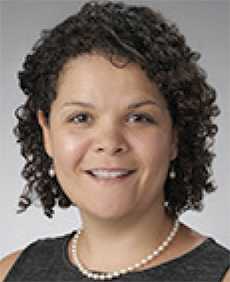
Identifying and Engaging Stakeholders

In the first blog post, six aspects of public engagement were introduced. These aspects draw from examples from the William D. Ruckelshaus Center (a collaborative policy and research center that facilitates the resolution of complex public policy challenges in Washington State and beyond) and the author’s two decades of research, training, and practice in public engagement and collaboration. The first aspect of public engagement is “The Mindset of Collaborative Engagement” and the second aspect is “Developing the Purpose of Engagement.” Today, we will discuss the third aspect of public engagement, “Identifying and Engaging Stakeholders.”
Effective public engagement depends on identifying and involving the right stakeholders to achieve purpose. Without broad representation from those directly affected by policy decisions, engagement processes can fall short of being inclusive and equitable. The William D. Ruckelshaus Center emphasizes the importance of stakeholder identification, ensuring diverse voices are heard and included. Identifying who to bring to the table and getting them there can be difficult, particularly with limited time and resources. This is where existing relationships and a solid understanding of who can bring people together makes life easier.
In the Washington Collaborative Elected Leaders Institute discussed in the last blog post, we narrowed our participant list to city elected leaders for our pilot cohort. Then we worked closely with Association of Washington Cities staff to identify participants from across the state to ensure we had broad representation in the program. We also relied on AWC to help us with recruitment – they are a trusted partner in the local government space and when the put the call out for participants, the response was overwhelming. With minimal effort by the Ruckelshaus Center and the Evans School, we quickly filled our pilot program with fifty elected leaders from fifteen city teams.
We employed a similar process in identifying and engaging participants for our 2023 Summit for Civic Health and our 2024 Civic Health Network kickoff. In each case, Project for Civic Health partners spent several months developing and refining a potential list of participants and then figuring out how to reach them – an ask from the Lt. Governor is a powerful tool, especially from one as well respected as Lt. Governor Heck. We also relied on relationships other partners had with potential participants. In each case, we wanted t to bring together a diverse group of stakeholders committed to improving civic health. The purpose of the 2023 Summit was to co-create solutions and we had broad participation from approximately two hundred participants. The purpose of the 2024 summit was to seed and nurture a statewide network of organizations committed to civic health. The resulting group was smaller – around forty participants- because our purpose to intentionally create relationships among participants that would go beyond the meeting. In both cases, we sought out participants and organizations from across the political spectrum because our belief is that it will take everyone to improve civic health in Washington State. Our primary requirement for stakeholder inclusion was a commitment to improved civic health.
Using participatory methods, the Center facilitates discussions where every voice counts. Public leaders can take a similar approach by mapping out all potential stakeholders and ensuring they have the opportunity to participate in meaningful ways. This not only increases the legitimacy of the process but also helps build trust among participants. We encourage leaders to think about including those affected by an issue, those who can influence an issue, and those who can champion or block an issue as a starting point for developing an inclusive list of stakeholders. Once the initial list is complete, leaders should engage stakeholders on the list to develop a snowball sample approach to find out who is missing from the conversation.
Stakeholder identification should be proactive and inclusive, focusing on those most affected by policy decisions. By involving a diverse range of voices, public leaders can ensure that engagement processes are representative and lead to more equitable outcomes. And remember- having relationships with civic and elected leaders who can bring people to the table will make the process easier for leaders to identify and engage stakeholders.



